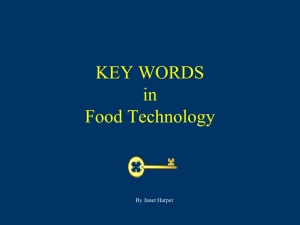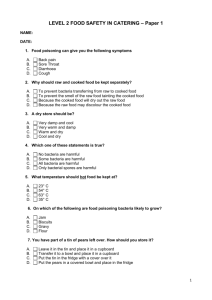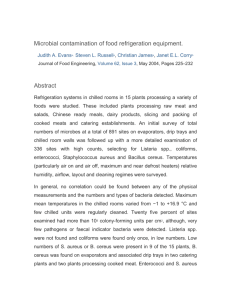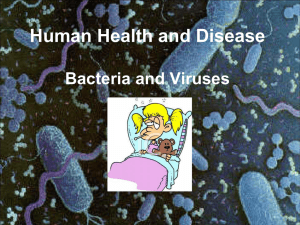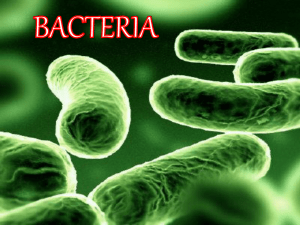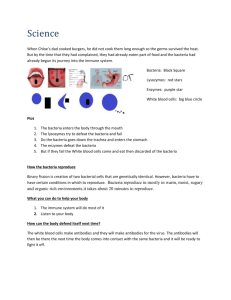File
advertisement
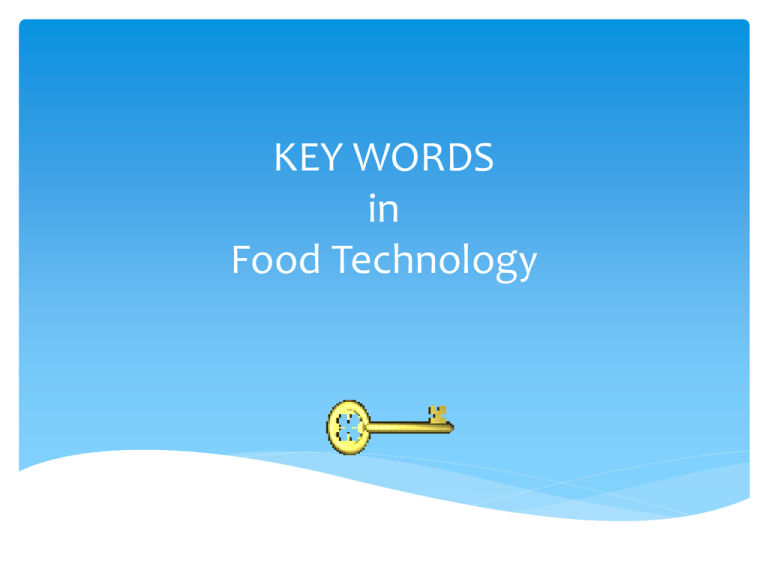
KEY WORDS in Food Technology Additives Substances added to food in small amounts to perform a function such as to preserve, colour or flavour a product. Aesthetics The appreciation of good taste or good design. The product appeals to your senses. “It looks appealing, I want to eat it!” Ambient temperature Normal room temperature. 20 - 25°C Antibacterial Working against or prohibiting the growth of bacteria. Bacteria Small microscopic organisms found all about us. They multiply by splitting in two every 20 mins. (Binary fission) Batch production Producing a small quantity of identical products. For GCSE assume 50. Blast chill To cool food quickly by blasting it with cold air. Blast freezing Quickly freezing that makes small ice crystals which do less damage to the food than slow freezing. Brand A particular make of product usually with a well known name e.g. Heinz baked beans. C.A.D. Computer-aided design e.g. programs used for designing packaging. C.A.M. Computer-aided manufacture. e.g. using a computer to help control baking temperatures. Travelling oven Component A ready prepared part of something. e.g. a ready made pizza base. Consumer A person who buys or uses products and services. Continuous-flow production Continuous processing 24/7. Expensive to set up, cheap to run. Fewer people employed; usually computer controlled. Cook-chill Food that has been cooked, fast chilled and then stored at low temperatures. Cook-freeze Food that has been cooked, fast frozen and then stored below freezing point. Cross contamination The transfer of harmful bacteria from one area to another. Danger zone The temperature range in which bacteria thrive. 5 - 63°c. Diet The food and drink that we eat. Diet is what you eat, but nutrition is what your cells and tissues actually receive. Dietary Reference Values DRV’s DRV’s show the amount of food energy or other nutrients needed by people of different ages. Due diligence In food preparation this means that the company has set up systems to help avoid contamination of food products. Fridge temperature E numbers The number given to an additive to show that it has been approved by the EU. Environmental Health Officer EHO The enforcement officer at local government level who covers public health such as the hygiene of food premises and food safety. Flow diagram Step by step chart or plan of a system or production process. H.A.C.C.P. Hazard analysis and critical control point. Hazard Anything that can cause harm to the consumer. High risk area The section in the food preparation area where food is most likely to be contaminated by bacteria. High risk foods Those most likely to encourage bacterial growth. e.g. cooked meat, cooked poultry, fish, dairy foods. Image board A display of pictures and drawings to give ideas about a target group or a range of products. Just in time Some factories & fast food outlets order stock just in time to manufacture the product. They do not have room to store it days / weeks in advance. Key words Important words that may relate to the design brief. Logo The symbol of a company used on products. Low risk area Section in the food preparation area where food is less likely to be contaminated by bacteria. M.A.P. Modified atmosphere packaging. Removing the air and flushing the packet with a gas. Marketable product One that appeals to people and will sell when it reaches the shops; to succeed, all products must be marketable. Modelling To experiment with an idea without actually cooking it. You can model the nutritional value of a food product by using FOODP6. One-off production One product is made, usually to order. It can be expensive. It is unique. Organoleptic Testing A posh term for sensory analysis. Using your sensory organs to test a product. In simple language, taste testing! Portion A portion for one is the amount of food that satisfies the need for one person. Product specification The exact details needed to make the product. Prototype A sample product to be used for trialling and market research. Quality assurance A system that is set up before a product is made and which lays down procedures for making a safe, quality product. Quality control The steps in the process of making a product to make sure that it meets the standards; faulty products are removed. Repetitive-flow production Assembly line production of a product, often using a conveyor belt. Used for producing large numbers. Sensory descriptors Words that describe taste, smell, texture and flavour. Shelf life How long a food product can be kept, making sure it is safe to eat and good quality. System Made up of:- Input Process Output Ingredients Processing/cooking Finished product Target group The person or group of people that the product is aimed at. e.g. teenagers, families. Tolerance level The amount and flexibility allowed when making a product – in terms of weight, colour, size – so that it meets quality standards. Using a colour chart Testing Viscosity Traceability Tracing a fault back to the point at which it occurred in order to remedy the fault and avoid it happening again. From farm to fork Trend The likelihood of something happening. e.g. there is a trend for more single portions.
